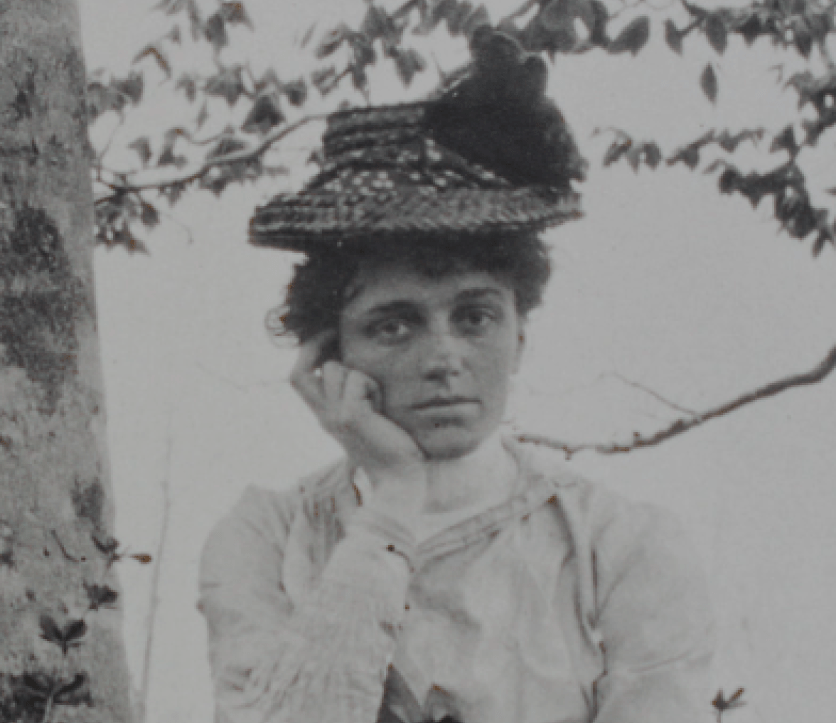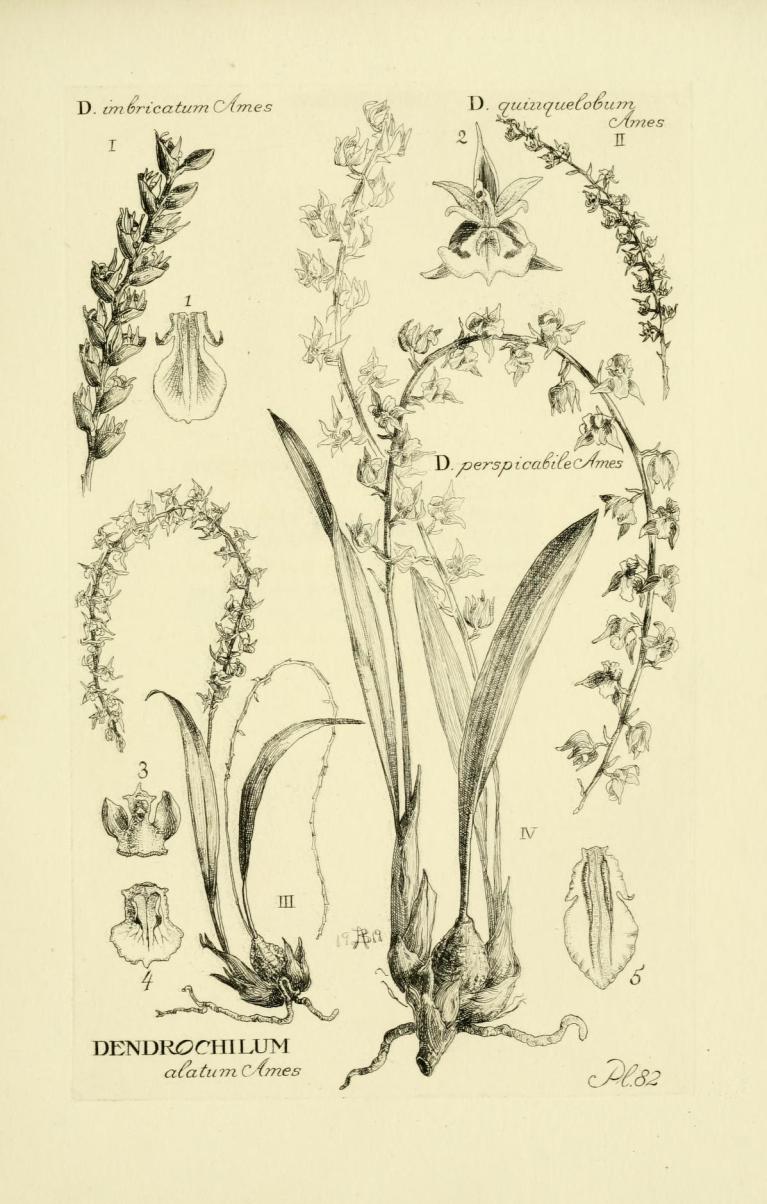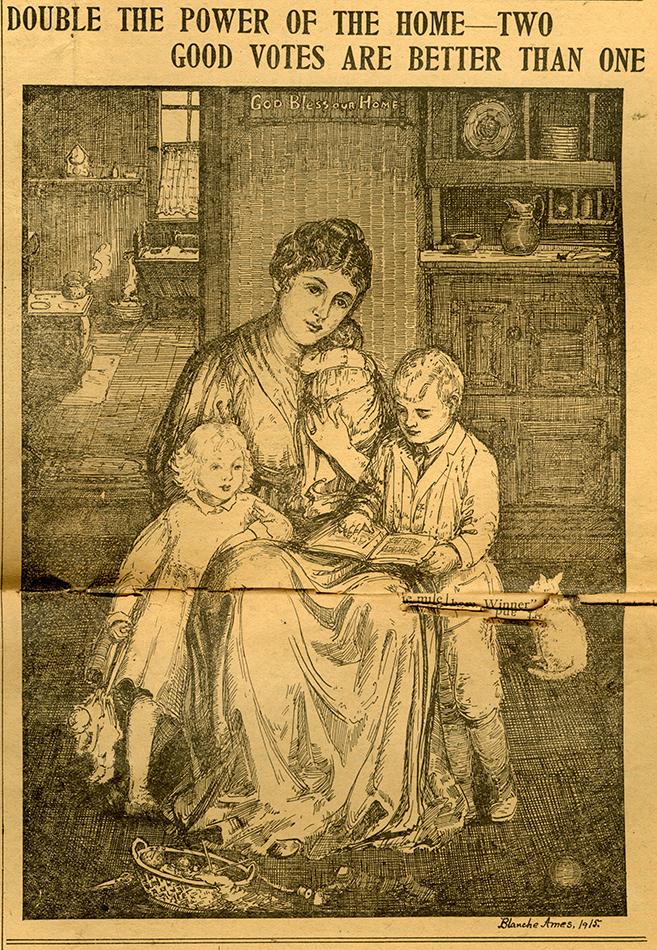Artist, inventor, women’s rights advocate
The holder of three scientific patents, a renowned botanical illustrator, a sought-after portrait painter, and a color theory expert, Blanche Ames Ames was also a fervent advocate for women’s suffrage and birth control.
Born on February 18, 1878 in Lowell, Ames was the daughter of Adelbert Ames and Blanche Butler. Ames’s father was a Civil War general who had served as governor of Mississippi during Reconstruction. Her mother, a prolific writer who published a book of her letters, was the daughter of Benjamin Butler, a general and the governor of Massachusetts.
Ames attended the Rogers Hall School in Lowell before enrolling at Smith College. At Smith, Ames served as president of her senior class and graduated in 1899 with degrees from both the College (in art history) and the School of Art. She dreamed of a career as a professional artist.
A year later, Ames married Oakes Ames (no relation), a botanist on the faculty at Harvard. The couple went on to have four children. Ames’s husband was an authority on orchids and is credited with discovering more than 1,000 new species during his many travels to the Caribbean, the Philippines, and Central and South America – but Ames was right by his side when he made those discoveries. Oakes Ames rightly referred to his wife as his “colleague.” Using a microscope and special camera, Ames created detailed illustrations and water color paintings of the orchids that her husband studied and she became known as the preeminent botanical illustrator of her time.
Ames further fulfilled her artistic ambitions as a portrait painter and color theorist. Elites from across New England and as far as Mississippi commissioned Ames to paint them. Fascinated by the study of color, she also worked with her brother, an ophthalmologist, to create the System of Color Theory. It included notations for 4,000 color variations based on the connection between how humans visually perceive color and how painters make use of it.
As the campaign for women’s suffrage heated up in the 1910s, Ames and her husband became active members of their local Easton Equal Suffrage League. In 1914, Ames became an officer in the state league and in 1915, she brought her artistic talents to the cause with a series of popular and incisive suffrage cartoons published nationally in The Woman’s Journal.
Not satisfied with fighting just for the vote, Ames also dedicated herself to making birth control readily accessible. In 1916, she co-founded the Birth Control League of Massachusetts. At the time, it was illegal to distribute contraception, so Ames developed a formula for spermicide and discovered ways to fabricate diaphragms from other household objects. In one instance, Ames carved a wooden penis and proceeded to demonstrate proper condom usage in the middle of Boston’s busy Commonwealth Avenue. She was arrested, but quickly released when the police realized she was the daughter of a former governor. Ames later became president of the board for the New England Hospital for Women and Children in Boston, where she promoted women’s medical education and advocated staffing the hospital entirely with female doctors.
In her later life, Ames earned three patents for devices she engineered: a hexagonal lumber cutter, a system for ensnaring low-flying aircraft, and an antipollution system for toilets. She also published a biography of her father in 1964. Ames died on March 1, 1969.
Additional Resources:
Ames Family Papers, Sophia Smith Collection, Smith College, Northampton, Mass.
“Orchids: Hidden Stories of Groundbreaking Women.” Smithsonian Gardens.
Borderland: The Life & Times of Blanche Ames Ames (2020) documentary.
Bibliography:
“Mrs. Oakes Ames, Botanist’s Widow.” The New York Times. March 3, 1969.
Snyder, Laura J. “Brief Life of Blanche Ames, Intrepid Botanical Illustrator.” Harvard Magazine. July-August 2017.
Trahan, Erin. “Massachusetts Suffragette And Birth Control Trailblazer Gets Her Due In A New Documentary.” WBUR. February 20, 2020.
Van Voris, Jacqueline. “Ames, Blanche Ames (18 February 1878–01 March 1969), Artist and Women’s Rights Activist.” American National Biography. February 2000.


